| Corcoran Technical Trading Patterns For March 13 |
| By Clive Corcoran |
Published
03/13/2009
|
Stocks
|
Unrated
|
|
|
|
Corcoran Technical Trading Patterns For March 13
The bottom bell ringers, including Barron's magazine and a number of previously bearish fund managers, are looking very good after yesterday's performance. They will look even better if the S&P 500 can continue its upward trajectory today and move decisively beyond the 750 level.
Just as a point of correction with regard to all of the charts shown today - despite what the label at the top of each charts shows these are daily charts and not 15 minute charts.
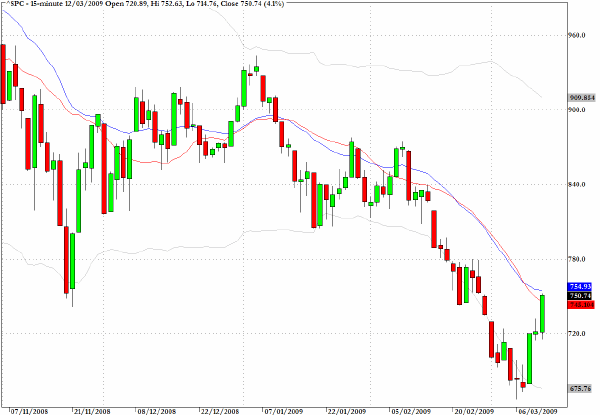
If one is prepared to take at face value the surge through two key moving averages in Friday's trading of the Nikkei 225 this could be said to be paving the way for further upside momentum in coming sessions in the US.
My only hesitation and the reason for saying at face value is that there has been a tendency in previous bear market rallies for these false breakouts to appear. A key descending trendline has been broken or a break above a pivotal moving average is made only for relapses to occur.
But casting scepticism aside for the present and simply absorbing what the charts are currently telling us the financial world is definitely becoming more cheerful (although average citizens certainly don't seem to be).
We may be witnessing a seismic shift where the fear from money managers is less one of losing their jobs because client redemptions have edged up relentlessly, to a fear of getting left behind as their peers are outperforming them. This is the paradox of how markets are moved by how average opinion perceives average opinion, and this was so eloquently expressed by Keynes in connection with the judging of a beauty contest.
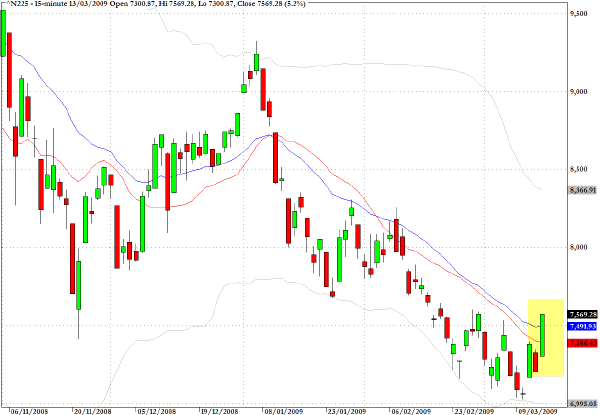
The Hang Seng Index (HSI) also had an upbeat session on Friday and has rallied back to a re-test area.

Yields on long term US Treasuries have been trading in a very narrow range for several weeks as the chart for the exchange traded fund TBT reveals. The fund moves inversely with the price of Treasury bonds of 20 plus years maturity and therefore is a surrogate for the yield.
At this stage it is difficult to have a firm view about a directional trade but the supply of US government paper is becoming more of a concern for the markets and in particular for one of the main purchasers of American government bonds - the Chinese government.
It was reported by AP today that Premier Wen Jiabao called on Washington to see that its response to the global slowdown does not damage the value of Chinese holdings.
He is quoted as follows:
"We have made a huge amount of loans to the United States. Of course we are concerned about the safety of our assets. To be honest, I'm a little bit worried," Wen said at a news conference following the closing of China's annual legislative session. "I would like to call on the United States to honor its words, stay a credible nation and ensure the safety of Chinese assets."
Reading this I got a minor déjà vu of the warnings from two years ago coming from some analysts about the deterioration in the housing market and the risk of relaxed credit standards. But not to worry I am sure that the US Treasury are managing the debt issuance in a prudent fashion.
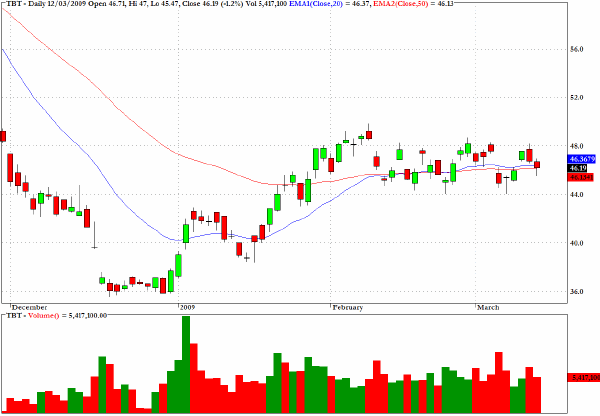
My favorite chart this week is for KBE, the exchange traded fund which tracks the Banking Sector, and this week's powerful rally has finally validated the claims made in this column on several occasions over the last few weeks that a momentum bottom was put in place for this sector during January.
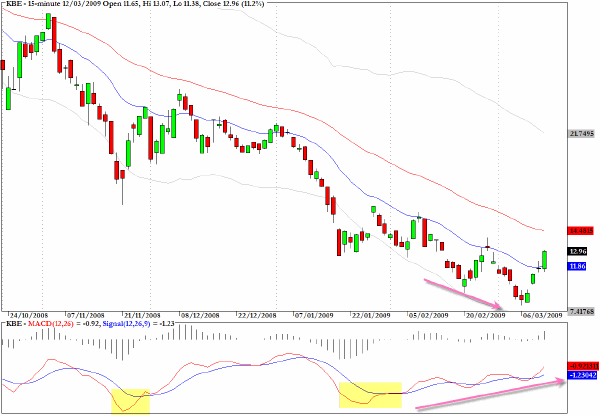
Yesterday's comments regarding the US dollar seem to be worth repeating as the possibility that an intermediate top is in for the dollar seems is suggested by the chart for the UDN chart which is an inverse tracker for the US dollar against a bundle of major currencies.
There has been a penetration of the descending slope line and two moving averages, and provided this is not reversed in today's trading I would suggest that the recent trend for US dollar strength has peaked.
This would, in turn, be another supporting factor for a continuation of the bear market rally in equities.
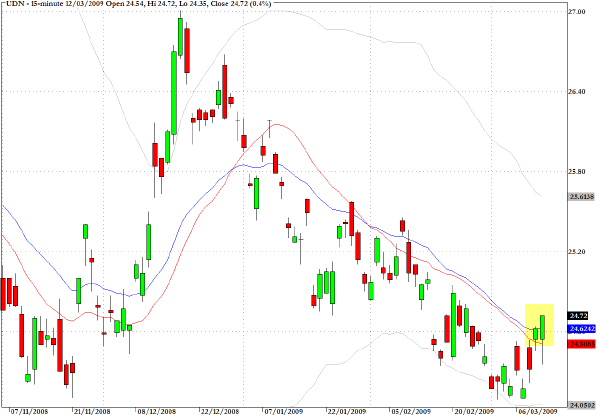
The investment grade corporate bond sector fund LQD is not responding to the same positive sentiments that are providing a bid for equities.
There still seems to be real concerns amongst money managers about the bonds issued by US banks and this could have further to play out as markets await the results of the stress tests being conducted by the largest US banks.
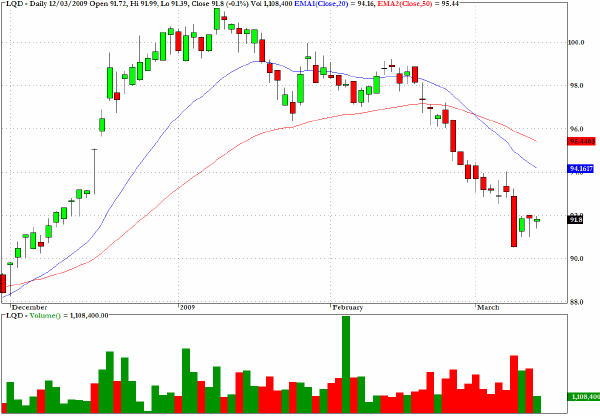
Clive Corcoran is the publisher of TradeWithForm.com, which provides daily analysis and commentary on the US stock market. He specializes in market neutral investing and and is currently working on a book about the benefits of trading with long/short strategies, which is scheduled for publication later this year.
Disclaimer
The purpose of this article is to offer you the chance to review the trading methodology, risk reduction strategies and portfolio construction techniques described at tradewithform.com. There is no guarantee that the trading strategies advocated will be profitable. Moreover, there is a risk that following these strategies will lead to loss of capital. Past results are no guarantee of future results. Trading stocks and CFD's can yield large rewards, but also has large potential risks. Trading with leverage can be especially risky. You should be fully aware of the risks of trading in the capital markets. You are strongly advised not to trade with capital.
|